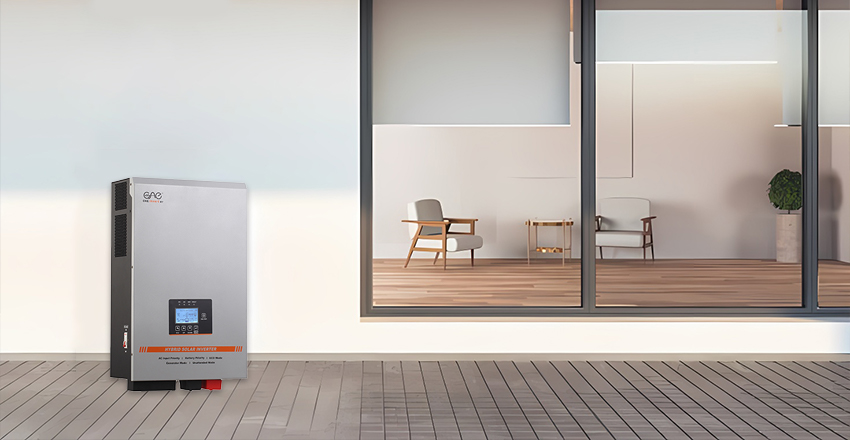Solar energy is one of the big players on the global renewable energy stage and whether you are Boasting with your solar panels at home or you run a business, one must focus on improving the performance of solarpower systems. One of the most important components of a solar power system is the solar inverter, the device that changes the direct current(DC) electricity produced by solar panels into alternating current (AC) electricity for use in our homes and businesses. One of the most common and low-cost types of inverters (which help making solar power systems more efficient), solar string inverters are present in the solar energy market. Here’s howthey boost the efficiency of solar power.

The array of solar panels is powered by an inverter, whose job is to take your string of solar panels sun energy produced in your solar system and convert the solar energy into voltage that can be utilized. This way, several panels can channel power to a central inverter device, which combines all of the panels for energy protection on a large scale. The inverter outputs the highest global efficiency output by a more compact waste conversion of the blended or battery energy to usable alternating current (AC) energy.
Unlike microinverters, which perform energy conversion at the panel level, string inverters perform energy conversion for the whole string of panels, which improves the efficiency for larger systems and decreases the number of components, allowing for easier maintenance and potentially lower costs.
Another feature that you find in modern string inverters is one of their key features: being able to monitor the performance of each string. Based on the energy generated at string level, the inverter appears to track the inefficiencies or underperformance because of shading, dirt or loss of some aspects. Monitoring of home energy usage also makes sure that we avoid problems when it comes to energy loss.
Some inverters also have optimization technology integrated into them to enable the output of single panels or strings of panels to be tweaked if one panel is underperforming so performance is still maximized even if one panel shut-is down or is not operating optimally due to shading or dirt. This enables making the system performance more optimal altogether.
They are beneficial for circuits having variable loads or input voltages — for example, in the case of string inverters, which are inbuilt maximum power point tracking (MPPT). MPPT allows the inverter to permanently change the operating condition of the system for optimal energy extraction from the spring panels. Solar panels have their production affected by temperature, shade and time of day. Varying Environment Parameters Effect InverterEfficiency MPPT varies the operating point of inverter and keeps it tuned to maximum point even when there is a change in environment variables. Without MPPT in solar systems, they will operate at a constant power rate that can lead to energy wastage. String inverters with dynamic tracking ability track the maximum energy production potential of panels under changing conditions to increase overall energy yield.
Solar systems with one string inverter per layout significantly reduces conversion loss in the instance that multiple inverter are utilized. However, each inverter in the system can cause energy loss during the conversion, and as a result, a centralized string inverter minimizes these losses. Further, the more components (like several microinverters) there are, the more opportunity there is for waste because energy is required to power each additional component.
They help minimize the complexity of an inverter system, hence minimizing the wire types and the number of components involved, which can also cause energy losses.[10] More connections means more wiring resistance, so this configuration reduces resistance between the panels and inverter, converting and transferring energy much more efficiently.
Minor Inverters Vs. String Inverters String inverters are generally more affordable than micro inverters and power optimizers, which allows you to save money on your solar system. String inverters eliminate extra components (which added cost and made the overall system less efficient) by centralizing all energy conversion into a single unit. The reduced initial investment and their efficiency boost make the string inverters a great choice for families and communities wanting an economical, performant solar system.
Conclusion
Solar string inverters play a crucial role in improving the efficiency of solar power systems. Through features like centralized energy conversion, real-time monitoring, MPPT technology, and scalability, string inverters maximize energy production, minimize system losses, and provide reliable performance. Their affordability, durability, and ease of maintenance make them an ideal choice for homeowners and businesses looking to invest in solar energy. As solar power becomes an increasingly popular option for reducing energy costs and environmental impact, the role of string inverters in improving solar power efficiency cannot be overstated.